How to Roast Butternut Squash Two Ways
After harvesting well over a hundred butternut squash this fall, we have been experimenting with all of the ways to cook it. By far our favorite, though, is roasting butternut squash. Roasting butternut squash is so easy and results in a smooth, creamy, and almost caramelized butternut squash that’s second to none. We’ll share all of our tips for how to roast butternut squash perfectly for any application.
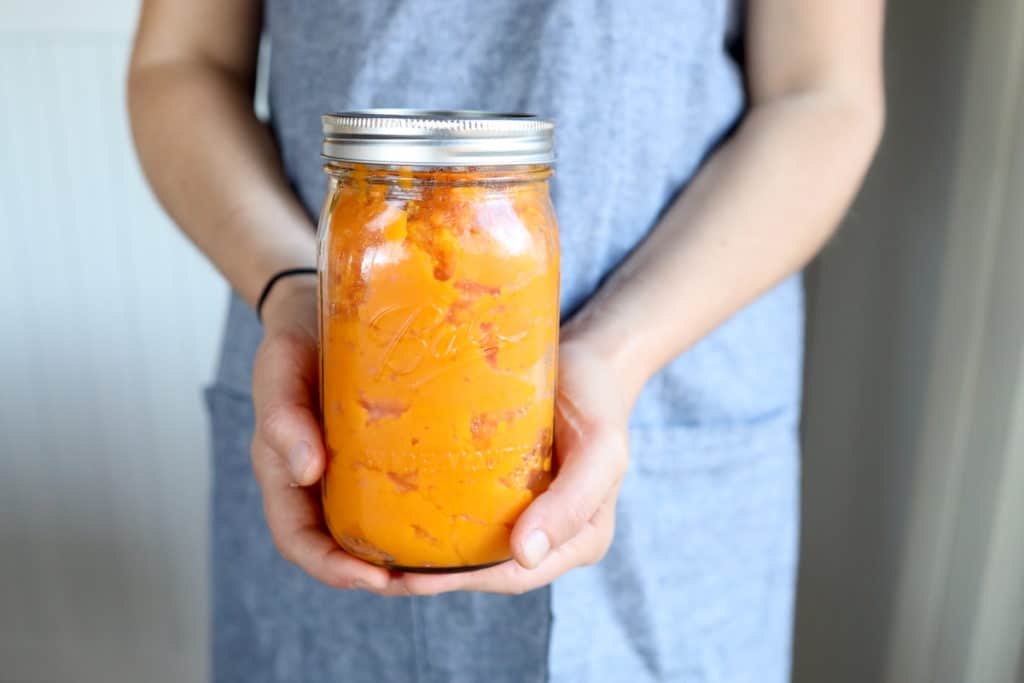
Benefits of Butternut Squash
Of all of the winter squashes, butternut squash is our favorite. We have found butternut squash to grow more robustly and store better than most other varieties. In fact, in October of this year, we just devoured the final butternut squash from the crop that we had grown the previous year.
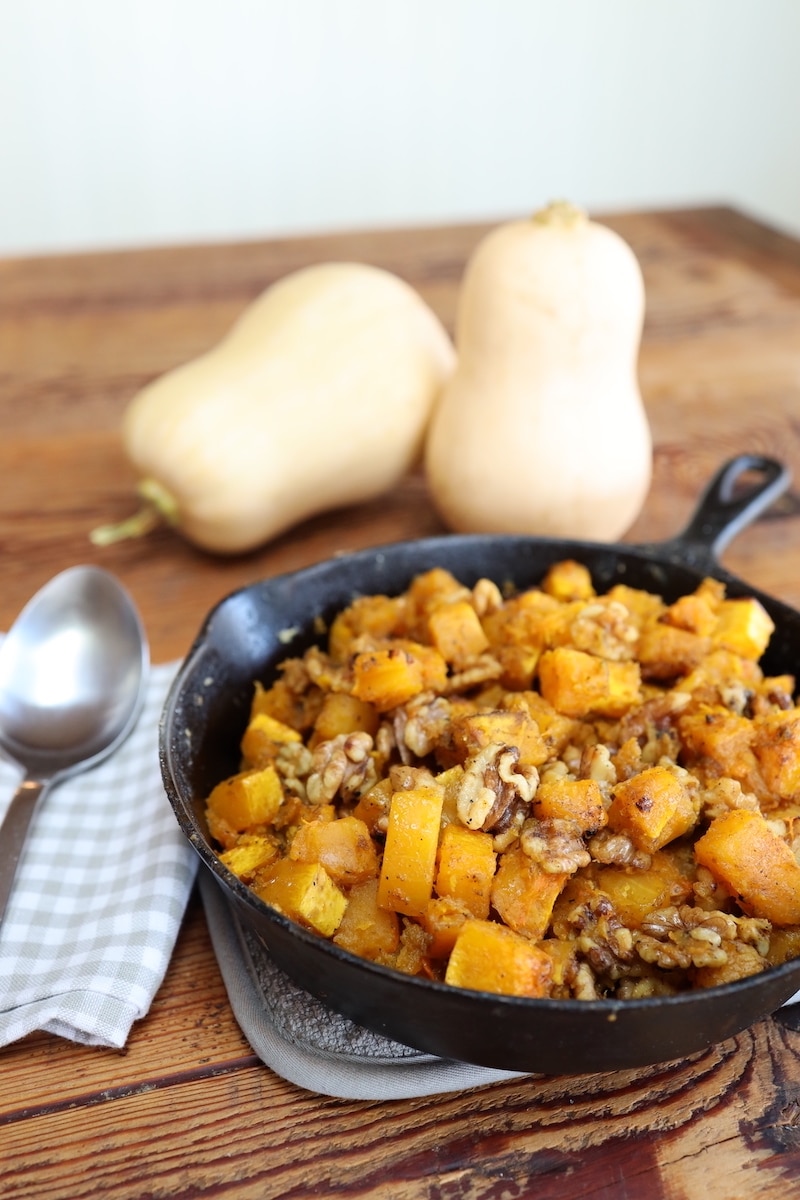
Butternut squash also has a deep orange color with a really smooth and creamy texture. This deep orange color is a sign of it being an excellent source of vitamins and minerals. It is a great source of vitamin A, vitamin C, thiamin, niacin, vitamin B6, folate, pantothenic acid, calcium, iron, phosphorus, potassium, magnesium, and manganese.
How to Choose the Perfect Butternut Squash
Whether or not you grew your own butternut squash in the garden, the fall is a great time to stock up. Farmer’s and farmer’s markets are usually offering them in abundance at lower costs this time of year. Because they store so well for many months, purchasing squash from your local farmer to use in the months ahead is a great investment!
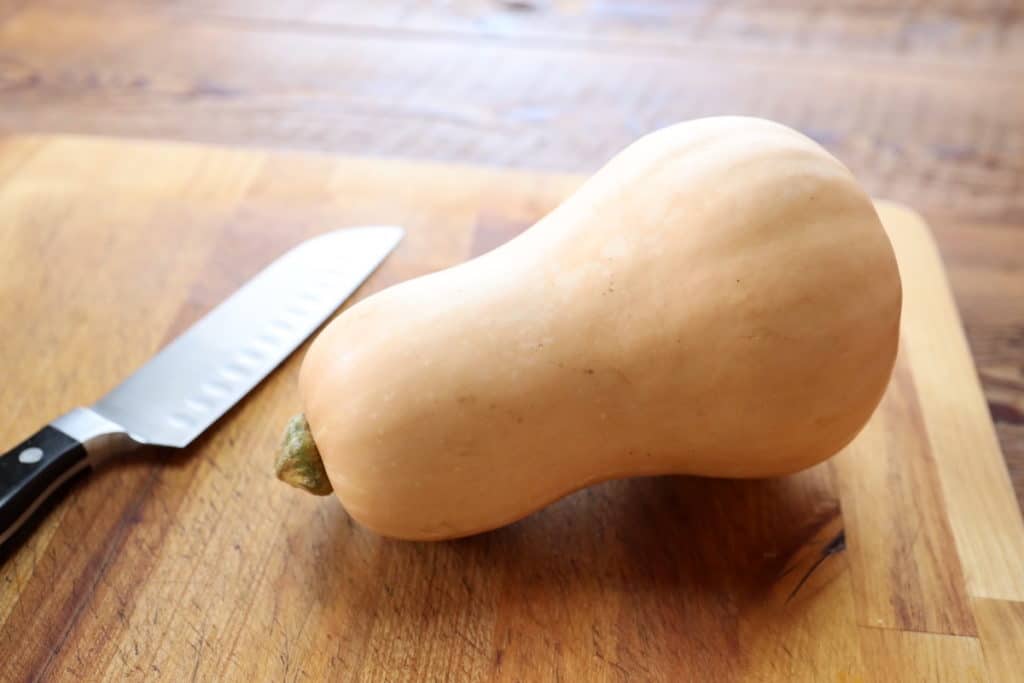
When choosing butternut squash, look for a squash that is a light tan color. Green is an indication that it is not yet ripe. However, those green squash will continue to ripen over time even off the vine. The biggest factor to look for is a squash that is completely firm with no visible blemishes or squishy spots. Butternut squash with soft or bad spots tend to rot quickly and not store well.
Butternut Squash is a Perfect Substitute for Pumpkin
The beauty of butternut squash is that is substitutes beautifully one-for-one with pumpkin puree. So, any recipe that calls for canned pumpkin or pumpkin puree, we like to use pureed butternut squash instead. This makes butternut squash a great choice for using in baked goods like our butternut squash muffins, pies, or other tasty treats.
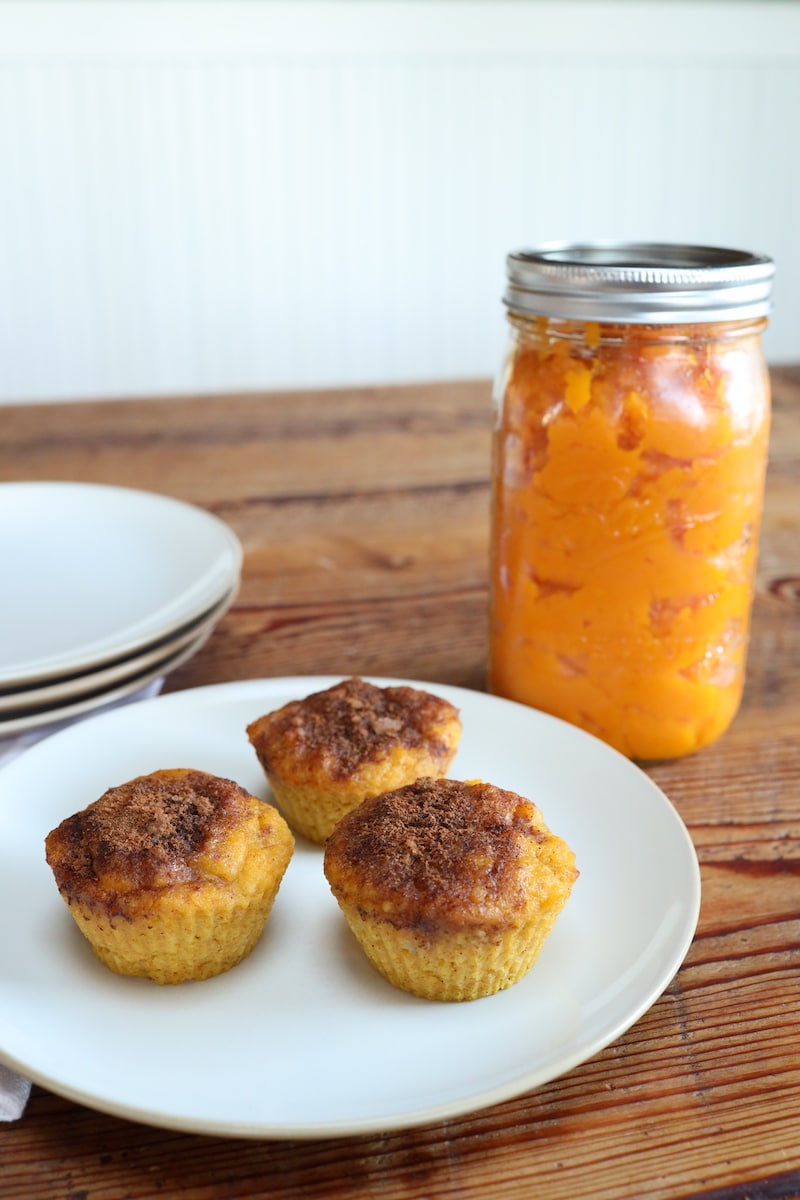
In our opinion, the thicker and less watery consistency of butternut squash makes it tastier with a better texture than pumpkin anyway. The thicker flesh also makes it easier to work with since you don’t have to worry about draining off the liquid mess that you often have on your hands when making puree from a pie pumpkin. We’ve also found the color of the vibrant orange butternut squash to be more appealing in baked goods and pies.
HOW TO ROAST A BUTTERNUT SQUASH – 2 Ways
When it comes to butternut squash, there are many ways to prepare them. Boiled, sautéed, roasted, mashed, cubed, sliced, you name it. Our favorite ways, and two of the most common ways, to eat butternut squash for the best taste and texture are to either:
1) roast them whole and mash or puree them, or
2) peel and cube them and then roast them.
Both ways are delicious! But, as discussed, each can serve a very different purpose.
How to Roast a Butternut Squash in Halves to Make Pureed Butternut Squash
Roasting a butternut squash is quick and easy to do. Make sure you have a large cutting board and a sharp knife on hand. Because of the large and a bit awkward shape of the squash along with the firm texture, they can be a little tricky to work with.
Step one
Slice your butternut squash in half.
Step two
Scoop out your seeds. Make sure not to waste those seeds, they are a delicious and nutritious bonus the squash provides – you can roast them up or we tend to give them to our chickens and consume them in the form of nutrient dense eggs.
Step three
Place your halved and seeded squash flesh side down on a large rimmed baking sheet or dish. The rim is important because a little liquid may come out in the roasting process so you don’t want a mess on your hands.

Step four
Roast at 400°F (200°C) for 30-60 minutes depending on the size of your squash. I’ve found that most average, medium-sized squash will need about 40-45 minutes. Smaller squash can likely be done in 30 minutes and larger squash may need up to an hour or more. You can tell your squash is finished when the outside skin is soft and will easily give when pushed with a finger or a utensil.
Step five
Once finished, remove from the oven and flip your squash over so the flesh is up. This is especially important if you are in a hurry so that your squash will cool much more quickly than if you leave it flesh down.
Step six
Using a spoon, scoop your roasted butternut squash flesh out of the skins making sure to not scoop up any skin with your flesh. This can be a bit tedious and a little messy but the end result is well worth it!
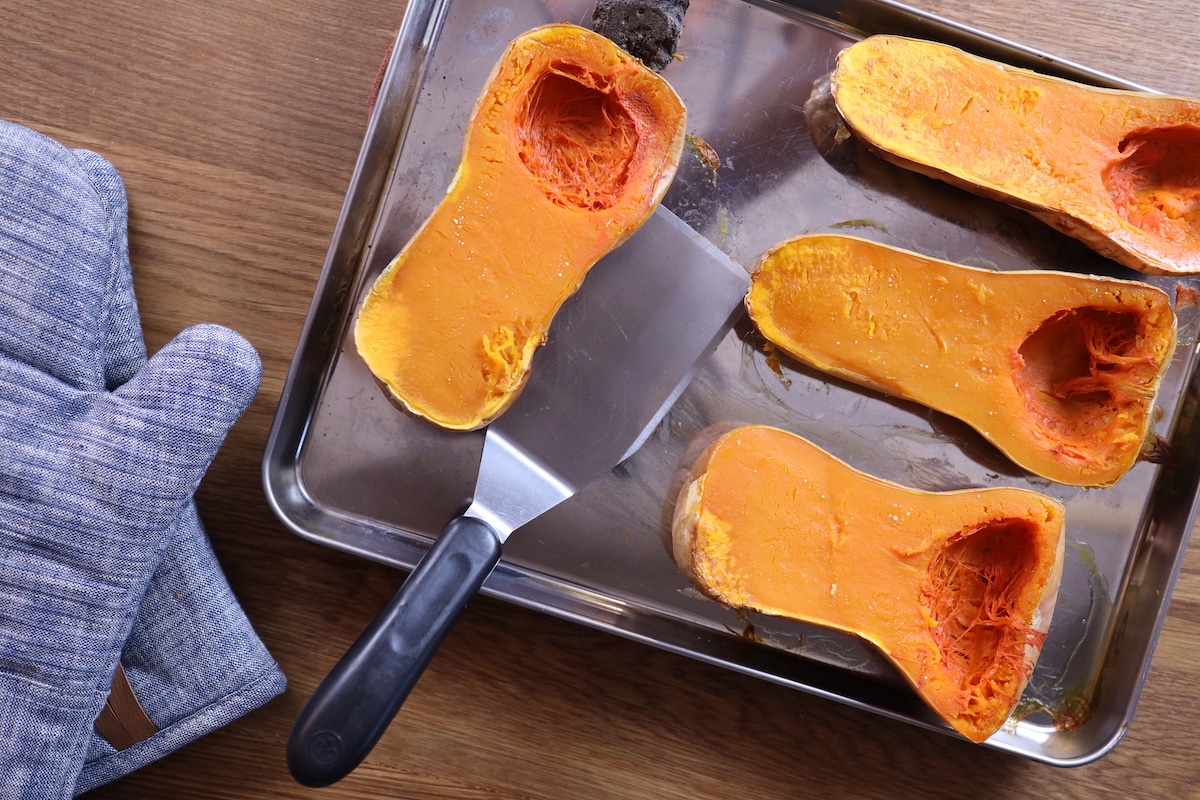
Step seven
Mash your butternut squash with a fork, potato masher, or immersion blender.
Now your beautiful, orange roasted mashed squash is ready to be used as the perfect side dish with some butter, cinnamon, and salt, or transformed into a delicious squash or “pumpkin” treat.
How to Roast Cubed Butternut Squash
If you are looking to use your butternut squash as a side dish or in some sort of soup, stir fry, or hash, this is our go-to method.
Step one
Slice your butternut squash in half.
Step two
Scoop out your seeds. As mentioned above, the seeds are great for roasting or feeding to animals.
Step three
Peel butternut squash.
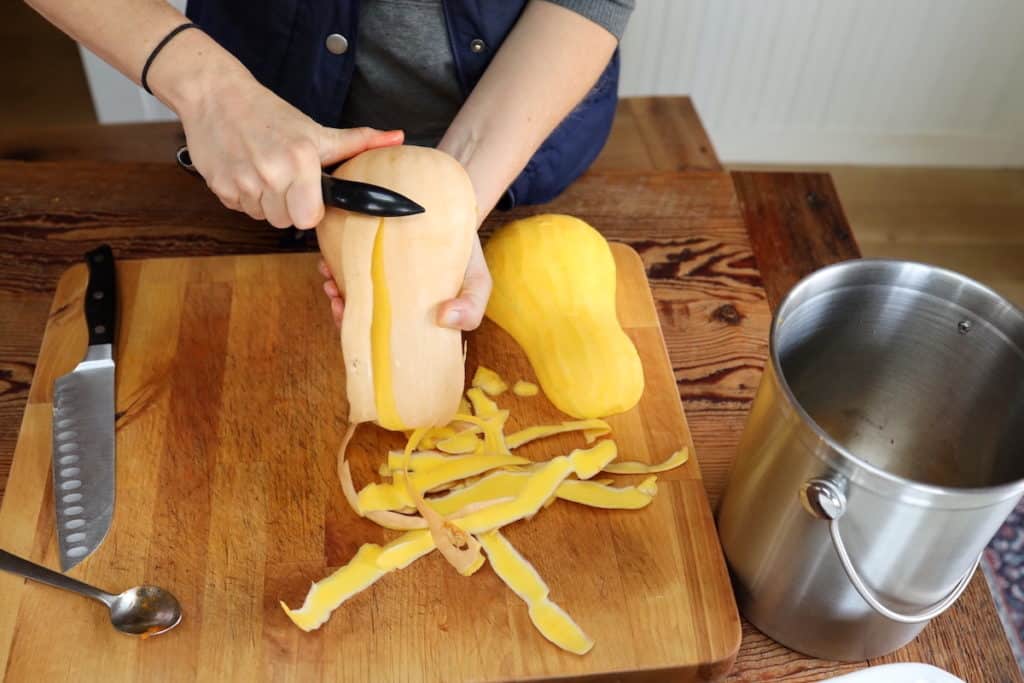
Step four
Cube butter nut squash into ½ inch – 1-inch sized cubes, depending on your preference.
Step five
Lay butternut squash cubes in a single layer on a large rimmed baking sheet or dish with a tablespoon or two of desired cooking fat. We prefer to use butter, lard, coconut oil, or olive oil for this. Sprinkle with salt.

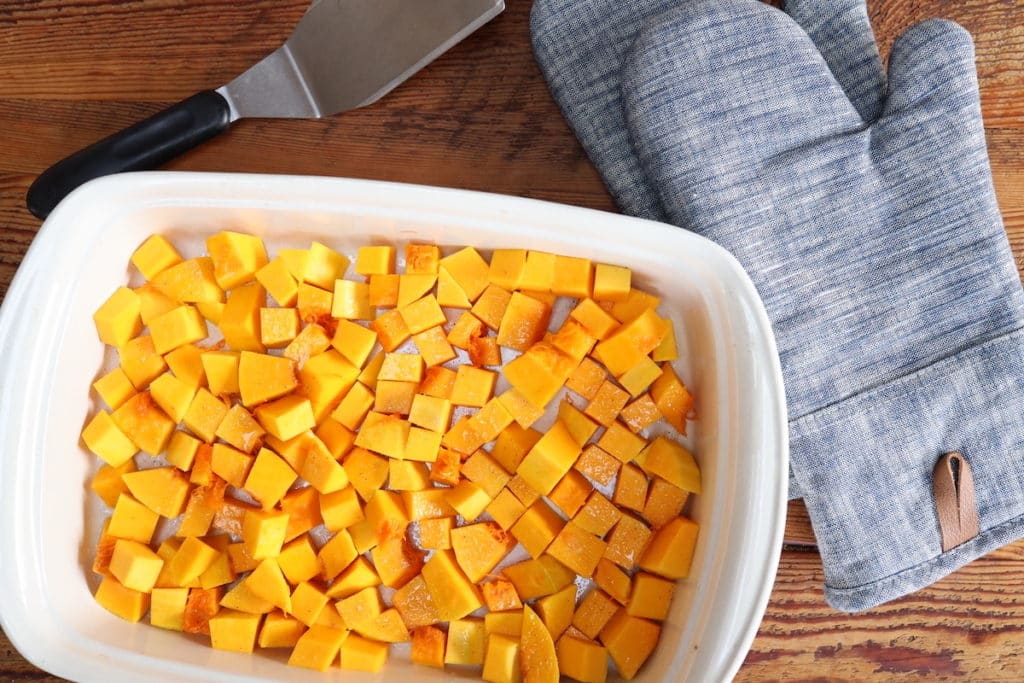
Step six
Roast at 425°F (218°C) for 25-30 minutes.
Step seven
Remove from heat and test by piercing with a fork to make sure your squash are fully cooked.
Toasted Walnut and Vanilla Butternut Squash Side Dish
Roasted squash is delicious eaten just like this or ready to be added to your favorite stir fry or other side dish.
One of our absolute favorite ways to eat this roasted butternut squash is in this toasted walnut and vanilla butternut squash side dish.
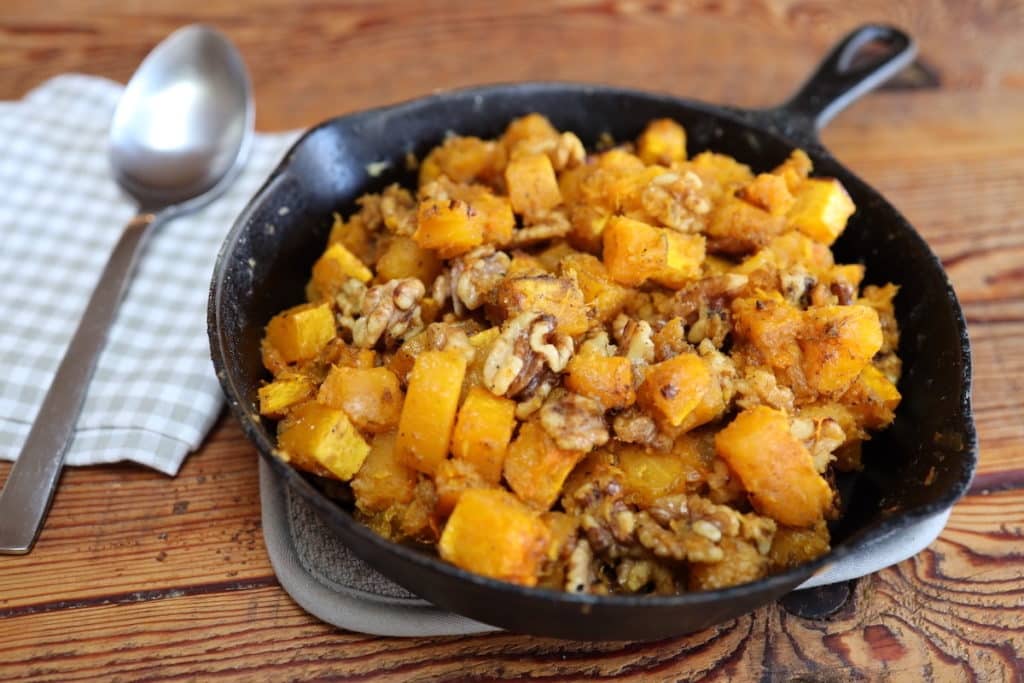
To make, toast your walnuts while your squash is in the last 5-10 minutes of cooking by placing walnuts on a pan over med-high heat. Stir walnuts regularly so they don’t burn and once they begin to be a toasted light brown and you can smell that wonderful walnut smell, remove from heat. Toss the walnuts in 2-3 tablespoons of butter and add your cooked butternut squash to the pan to gently mix with the butter and walnuts. Add 1-2 teaspoons of vanilla, along with 2 tsp of grated ginger and ½ tsp of thyme for a completely magical combination.
This is one of our favorite side dishes and the perfect complement to a Thanksgiving feast or cozy fall meal.
What are your favorite ways to eat butternut squash? Tell us below!
Looking for other ways to use butternut squash? Check out these recipes:
- Butternut Squash Enchilada Casserole
- Butternut Squash Lasagna
- Simple Gluten Free Butternut Squash Muffins
- The Best Slow Cooker Butternut Squash Chili
Pin it for later!

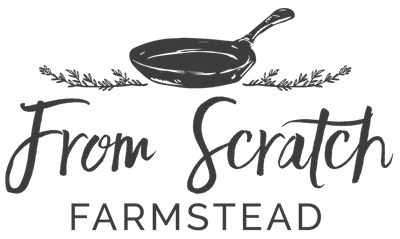
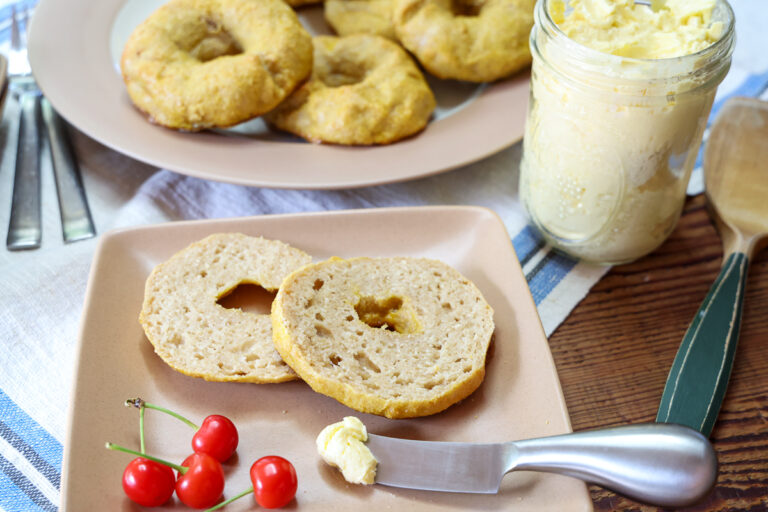

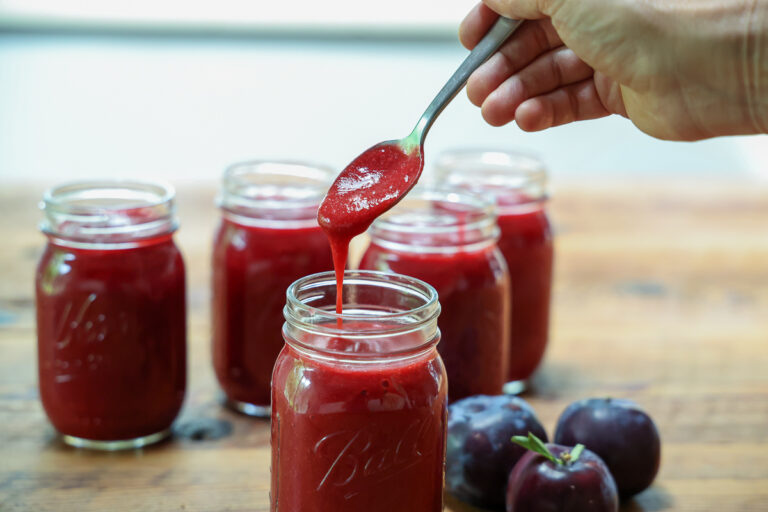
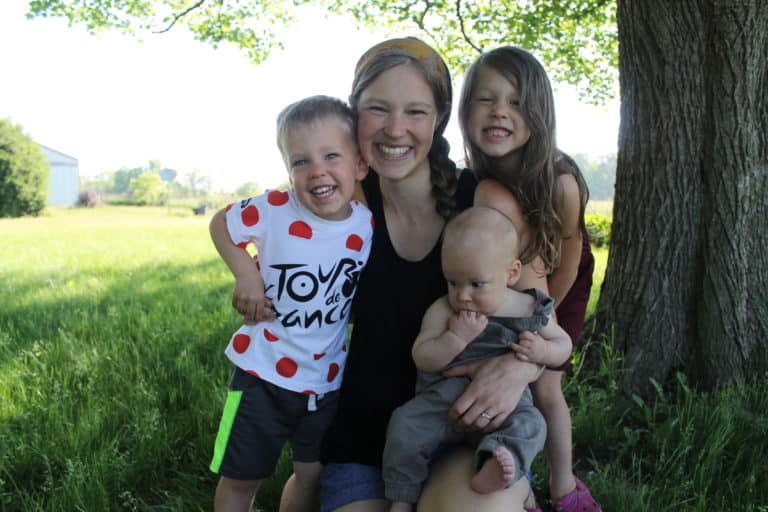

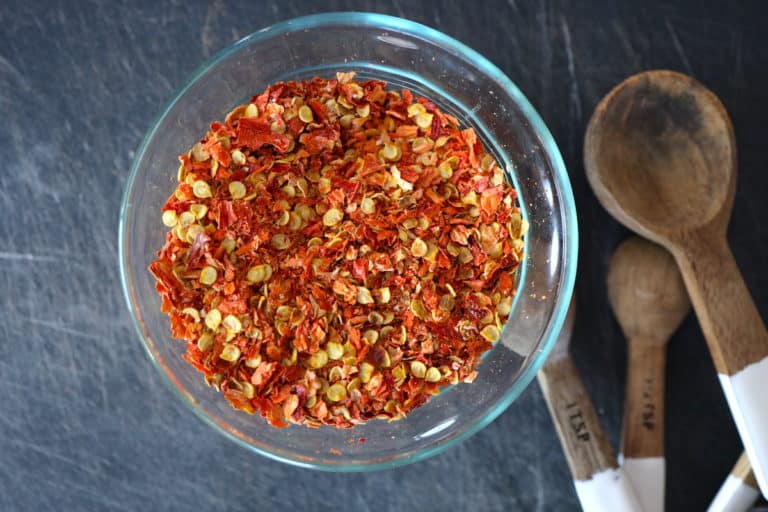
We love to cook cubes in our vegie steamer, then add butter, salt and pepper, makes a great mashed potato substitute or toss cubes with olive oil, Italian seasoning and salt, then roast. Another favorite is to make french fries, toss with olive oil and salt and airfry. Yum!
Oooh, sounds yummy ????. Might have to try those french fries!
I often simplify – cut into slices about 3/4″ thick. Roast at 425 (takes less time because of the slices). The slices *and skin* are perfectly fine to eat, as long as it didn’t harden from being in the oven too long. Similar approach with butternut soup – leave the skin on, and blend it all together.
This is helpful! Thanks for sharing!